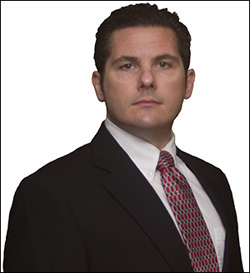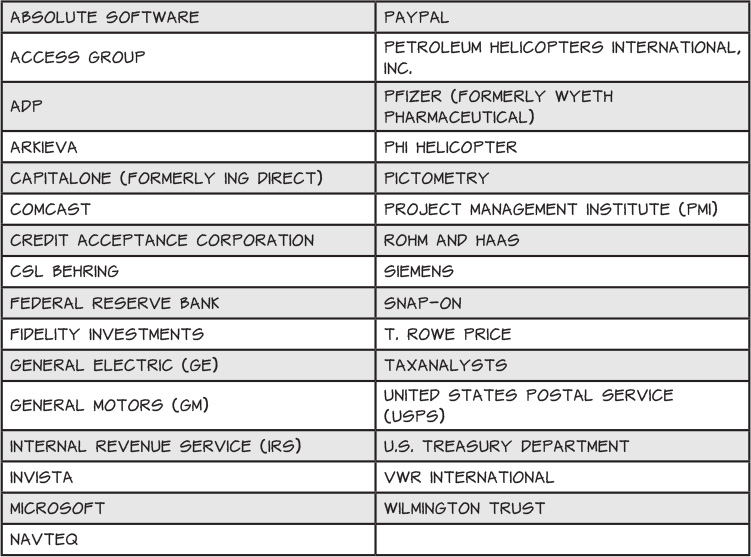Preface
“What is the one burning question that you have on your mind about Agile/Scrum right now?”
For more than eight years I have been coaching and training individuals, teams, and organizations in Agile product development, and I have noticed that in spite of the vast number of books on various topics in Agile, people still have questions that seem to be unanswered. I became intrigued with the idea of capturing these questions to see if there was anything that I could do with them. Are there any patterns? Any usable data that could be crunched and used?
I started using the game of “35” to elicit these questions from class attendees, workshop attendees, user group meetings, etc., and then adding them to my question bank in Excel. The result from the last two years has been a list of over 2,000 questions from entry to mid-level practitioners that cover a broad spectrum of Agile.
Although the nature of the questions varies widely, two things were clear to me: 1) many of the same questions continue to appear time and again, and 2) people are looking for practical, directive advice on what they see as practices from a vast body of largely theoretical writing.
I resolved to address these questions in a book of my own in a style that is practical, based on my own real-life experience over the last 10 years with a somewhat humorous, matter-of-fact, and down-to-earth bent. The driving vision in my mind has been: “What book would I want to read if I were starting off or had mid-level experience with Agile?”
Throughout the book, I have attempted to give some of the background as to WHY we do things a certain way in Agile, while also offering some examples from my own experience. When I started my efforts on this book, I found myself citing this client or that, this employer or that, in a way that quickly became tedious and really created a narrow focus for certain topics. I wouldn’t want someone reading this book to say, “Oh, well, we’re nothing like XYZ company so I won’t pay this passage any heed.”
Instead, I share my list of organizations with whom I have worked at the end of this preface and assure the reader that all of the writing in this book derives from my direct experiences with these organizations. Also, because of nondisclosure agreements (NDAs) and such, I am technically not allowed to talk specifically about things at some of these organizations. Who I have worked for is a matter of public record, and as long as I don’t mention specific practices being used at a specific organization, there is a reasonable level of abstraction from a legal standpoint.
When I am coaching individuals and organizations, I also emphasize that much of Agile involves working things out on your own and making sense of things for your own organization. Because Agile is also largely about freeing the minds of the organization and establishing a culture dedicated to learning, I am reminded of that scene in Monty Python’s Life of Brian when Graham Chapman as Brian is addressing the massive throng who has congregated outside his home:
Brian: “Listen, you don’t need to follow me, you don’t need to follow ANYBODY. You can all think for yourselves!!”
The Crowd: “Yes! Yes! Tell us more!!”
Brian: “No! NO! That’s the point, you are ALL individuals!”
One voice in the crowd: “I’m not.”
The Crowd: “Shhhh!!!”
At some point along the line in your Agile journey, you have to recognize that there are no absolute answers. There are only values, principles, practices, patterns, and ideas that serve as hints to the REAL point of all this—to break free of group-think and of standing on convention for the sake of standing on convention and to take a bold stab at being creative and innovative by taking risks and running the experiment ...
Blessing and peace.
Daniel Gullo
Real Experience
My Agile journey began back in 2006. I was managing the QA practice for a firm in Wilmington, Delaware, and one day, a valued client of mine handed me Ken Schwaber’s book Agile Software Development with Scrum. He asked if I had read it and began to rattle off a bunch of what sounded like gibberish to me at the time.
I was a hardcore command-and-control PMP with my eyes set on clawing my way up the rigid corporate hierarchy in my organization, or, even better, within one of my high-profile financial services clients once they saw just how “Gordon Gekko” I was ...

I remember just standing there smiling, nodding, and thinking to myself “Scrum? What the hell is that?? Sounds dirty. Like, what, SCUM? What does that have to do with software development?” I had no knowledge or interest in rugby and was more interested in what Cornelius Fichtner, Rex Black, Capers Jones, and Ivar Jacobson had to say than ... Ken who? I took the book and made a promise to let the client know what I thought of it within a week or so.
It was love at first sight.
What I read not only made perfect sense to me, but I saw it as the way of the future—the language of innovation but not innovation itself. “Scrum is a catalyst, an enabler ...” I thought. I also experienced an epiphany as I realized that I hadn’t been comfortable for the last 17 years of work because I was forcibly molding myself into something that wasn’t really in line with my soul.
I was hungry.
I devoured book after book on Agile. I went to CSM training and insisted on taking my course with Ken Schwaber himself. Tom Mellor was assisting Ken with the class. I remember about 70 people playing “manager and employee” trying to take 60 steps around the conference room. I remember the Major League Baseball ticketing system simulation. I was like a kid in a candy store. I had never had certification training that was actually fun AND practical AND informative.
In addition to managing all of the QA engagements for the company, I began going on billable assignments myself teaching people about Scrum. I acted as the interim ScrumMaster, and “coached” the organizations on how to use the feedback loops of Scrum to improve and explained why it was a good thing to have cost and time be fixed but scope be flexible in order to accommodate change.
Since 2007, I have trained, mentored, coached, and advised many organizations as both a full-time employee and consultant (see Table P-1). This is the experience I have drawn upon in the writing of this book. While I can’t divulge specifics of my work with many of these organizations, I feel it’s my obligation to share where my experience comes from in aggregate to lend credibility to the advice that I have provided here.
TABLE P-1 Organizations I Have Worked with (or for) since 2006 Doing Agile Training/Coaching (in alphabetical order)
You see, I live in the real world, too. Over the years, I have had students who, because of their inability to see what’s possible or their lack of vision or courage, have taken to patronizing me with the claim that they “live in the real world.” It often helps when I tell them stories of my real world experience implementing REAL WORLD AGILITY ...
Register your copy of Real World Agility for convenient access to downloads, updates, and corrections as they become available. To start the registration process, go to informit.com/register and log in or create an account. Enter the product ISBN (9780134191706) and click Submit. Once the process is complete, you will find any available bonus content under “Registered Products.”

